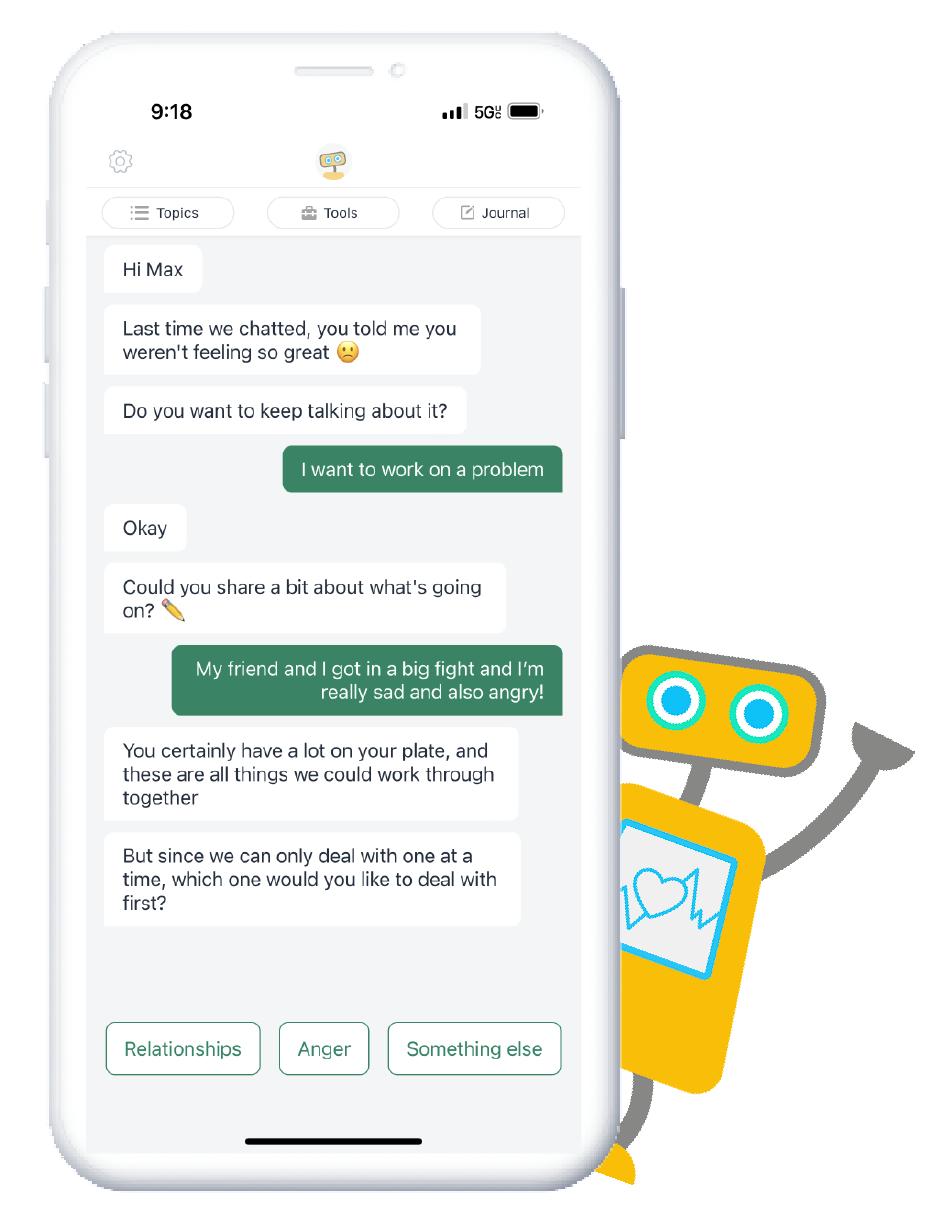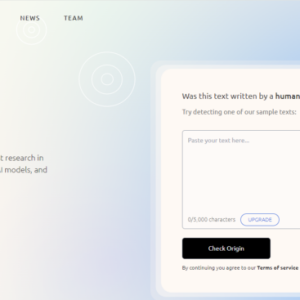In recent years, the field of mental health support has been revolutionized by the emergence of therapy bots powered by artificial intelligence. These innovative technologies are changing the way individuals receive mental health care, providing accessible and personalized support to those in need. By offering round-the-clock assistance and tailored interventions, therapy bots are helping to bridge the gap in mental health services and provide new avenues for individuals to manage their emotional well-being. In this article, we will explore the rise of therapy bots and how AI is transforming the landscape of mental health support.
In recent years, the intersection of technology and mental health has led to innovative solutions designed to make mental health support more accessible. One of the most promising advancements is the emergence of AI-powered therapy bots. These bots are revolutionizing the way support is delivered, offering new possibilities for mental health management.
You are viewing: The Rise of Therapy Bots: How AI Is Transforming Mental Health Support
Let’s take a look at the impact of AI on mental health support, the effectiveness of therapy bots, and the ethical considerations surrounding their use.
Help Me Transform My Business with AI
The Advantages of AI Therapy Bots in Mental Health
AI technology has several applications in the field of mental health that promise to enhance the accessibility and quality of care. Therapy bots, which are AI-driven programs designed to simulate conversation with human users, are one such application.
Here are three examples of therapy bots, all with different strengths:
- Woebot: is an “evidence-based, AI-powered digital companion at the heart of our platform that delivers personalized, in-the-moment support through chat-based conversations and techniques.” This chatbot focuses on teaching you Cognitive Behavioral Therapy (CBT) techniques to manage anxieties and negative thoughts. It’s good if you want to learn tools for self-help.

- Wysa: is a “clinically validated AI that gives immediate support as the first step of care, and human coaching for those who need more.” This penguin chatbot uses a combination of CBT, meditation, and other techniques to help with mood and emotional regulation. It has a fun and friendly feel.

- Talkspace: While technically not just a bot, Talkspace offers a mix of chatbot therapy and messaging with licensed therapists. They partner with major research institutions to validate the quality of their treatment methods. This is a good option if you want some human interaction alongside the AI support.
These bots can provide constant, immediate support to users, particularly for those who may not have ready access to traditional therapy due to cost, location or stigma.
Therapy bots like Woebot, which uses cognitive-behavioral therapy principles to interact with users, have been developed to help individuals manage symptoms of anxiety and depression. By engaging users in therapeutic conversations, these bots can help individuals reflect on their thoughts and emotions, and then provide personalized strategies to cope with everyday stressors.
Let’s take a look at some of the biggest benefits of AI-driven therapy bots.
24/7 Availability
One of the most significant advantages of therapy bots is their availability around the clock. They can provide immediate assistance or emotional support anytime, which is particularly valuable for individuals who might experience distress during non-working hours or who live in time zones with limited access to live therapists.
This constant availability can help manage acute episodes and provide continuous support, which is essential for effective mental health care:

Anonymity and Lowered Stigma
Engaging with a therapy bot can reduce the stigma associated with seeking mental health support. For instance, the National Library of Medicine study reveals that 75% of college students, a group that has a high level of stress and anxiety, don’t seek a therapist for help because of the stigma.
Some people might feel more comfortable discussing personal or sensitive issues with a bot than with a human therapist, especially in cultures or communities where mental health stigma is prevalent. The perceived anonymity can encourage more openness and honesty, leading to better outcomes in therapeutic settings.
Consistency and Scalability
AI-driven bots provide consistent responses based on the programmed algorithms and data they are trained on, which can be crucial for delivering standardized therapeutic interventions.
They are also highly scalable, meaning they can serve a large number of users simultaneously without the quality of service diminishing. This scalability can significantly extend the reach of mental health services, making basic therapeutic support more accessible to a broader audience, including those in underserved or rural areas.
CBT.chat’s Role in AI-Driven Therapy
I mentioned a few others above, but another notable example of an AI therapy tool is CBT.chat, which uses AI to deliver cognitive-behavioral therapy techniques to users via a chat interface:

This bot can guide users through various exercises that are typical in CBT, such as identifying distortions in thinking, challenging negative thoughts and practicing positive affirmations.
CBT.chat is a great tool as it makes mental health care more accessible. People can interact with the bot from anywhere at any time, providing a level of flexibility that traditional therapy cannot match. For many individuals, these interactions can serve as a first step toward seeking more comprehensive care or as a supplementary tool to ongoing therapy.
Effectiveness of AI Therapy Bots
Research into the effectiveness of AI therapy bots has shown promising results. Studies indicate that users of AI therapy bots report reductions in symptoms of depression and anxiety. These bots are particularly effective for individuals who have mild to moderate symptoms and can serve as a valuable component of a broader mental health strategy.
However, therapy bots are not without their limitations. While they offer immediate support and can teach coping strategies, they are not suitable substitutes for professional psychological help, particularly for individuals experiencing severe mental health challenges.
The efficacy of these bots largely depends on the AI’s sophistication and its ability to simulate empathetic and contextually appropriate interactions. For example, a bot using advanced natural language processing can more effectively mimic human-like conversations, which has been shown to enhance user engagement and satisfaction.
Woebot’s therapy bot, for instance, “is not a generative chatbot like ChatGPT. It’s rules-based, which means Woebot’s conversations are written by conversational writers with training in evidence-based approaches…with collaboration from our clinical experts.” This therapy bot has “guided 1.5 million individuals to get on a path to better mental well-being”:

See more : Why Chatbots Are a Must-Have for Businesses (and How to Build One!)
Incorporating cutting-edge AI technologies, such as machine learning algorithms that adapt to users’ emotional states and needs, can further enhance the effectiveness of these therapy bots. Nevertheless, it’s crucial for people seeking help and healthcare providers to recognize the limitations of digital therapy tools.
Ethical Considerations of Therapy Bots
The use of AI-driven therapy tools raises several ethical concerns. Privacy is a major consideration, as people share sensitive personal information with these bots (and other AI tech):

So making sure that this data is protected and not misused is crucial to maintaining user trust. And anyone who uses a therapy bot needs to be fully informed about how their data will be used, stored and shared. They must consent to these uses knowingly and voluntarily, ideally with easy-to-understand information rather than complex legal jargon.
Another ethical concern is the potential for dependency on these bots. While they offer valuable support, there is a risk that users might substitute professional care with interactions with a bot, which may not always be appropriate depending on the severity of the individual’s condition.
Here are a few additional aspects to consider:
- Transparency: It’s important for people to understand how AI therapy bots function, what algorithms are used, and how their data influences the bot’s responses. Transparency about the bot’s capabilities and limitations can help make sure that users have realistic expectations about the help they can receive.
- Bias and Fairness: AI systems can perpetuate or even exacerbate biases if they’re trained on non-representative datasets or if the algorithms themselves are flawed. So these therapy bots must be developed with diverse datasets and regularly audited for biases to prevent discrimination.
- Accountability: When errors occur, or when a bot’s advice leads to adverse outcomes, it should be clear who is accountable — whether it’s the developers, the company providing the bot or the healthcare providers who integrate these tools into their practices.
- Continuous Monitoring: Continuous evaluation is necessary to make sure therapy bots remain safe, effective and ethical over time. This includes updating systems in response to new ethical concerns and healthcare standards. The Diagnostic and Statistical Manual of Mental Disorders, the official reference book on mental health conditions and disorders written by the American Psychiatric Association, constantly updates these entries, and this needs to be reflected in AI therapy bots.

The Future of AI Therapy Bots in Mental Health
The future of AI in mental health looks very promising, with ongoing advancements in AI technology paving the way for more sophisticated therapy bots. These future bots could offer even more personalized support by adapting their responses based on the emotional tone and content of the user’s messages.
To really enhance their effectiveness, integrating these bots with professional healthcare services works best for now. For instance, therapy bots could be used as part of a stepped care model, where they provide initial support and, based on the user’s progress, recommend escalation to human therapists when necessary.
But with the right approach, AI can play a transformative role in mental health care, making it more accessible and effective for all.
Help Me Transform My Business with AI
For more insights and lessons about marketing and AI, check out our Marketing School podcast on YouTube.
That’s a wrap on “The Rise of Therapy Bots: How AI Is Transforming Mental Health Support” We hope you’ve found a trove of useful insights and fresh perspectives. Your opinions and ideas matter to us—join the conversation below and share your take! Hungry for more tech insights? Dive into our diverse collection of articles where innovation meets practicality. Discover More AI Softwares.
Stay in the loop with the latest in AI and tech – your journey into the digital future continues at hiddenshard.com.
#Rise #Therapy #Bots #Transforming #Mental #Health #Support
Source: https://hiddenshard.com
Category: AI





